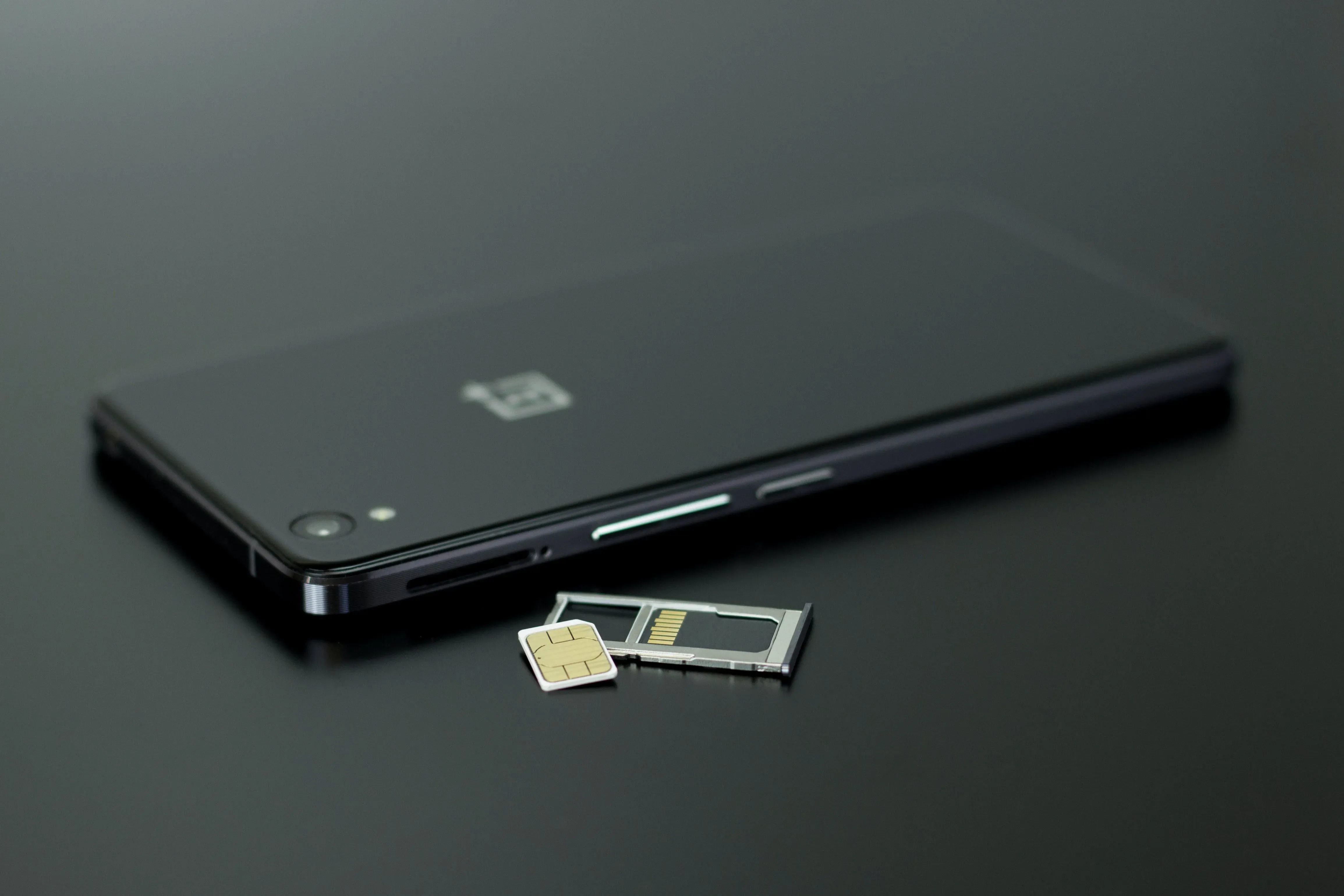ค้นพบการ์ด (e)SIM ที่ดีที่สุดสำหรับประเทศญี่ปุ่นและเกาหลี
ตัวเลือกการเชื่อมต่อสำหรับการเดินทางญี่ปุ่น-เกาหลีครั้งต่อไปของคุณ
สรุป
คุณกำลังเดินทางไปญี่ปุ่นและเกาหลีใต้ในทริปเดียวกันหรือไม่ เนื่องจากทั้งสองประเทศอยู่ใกล้กัน จึงเป็นเรื่องปกติที่นักท่องเที่ยวจะเดินทางไปเยือนสองประเทศในเอเชียตะวันออกนี้พร้อมกันในทริปเดียว หากคุณกำลังวางแผนเดินทางไปญี่ปุ่นและเกาหลีเช่นกัน อ่านต่อไปเพื่อดูว่าคุณสามารถเชื่อมต่อได้อย่างราบรื่นระหว่างการเดินทางของคุณอย่างไร!

เครือข่ายที่ดีที่สุดในญี่ปุ่นและเกาหลี
มาดูภาพรวมของเครือข่ายในญี่ปุ่นและเกาหลีกันก่อน คุณควรเลือกซิมการ์ดที่ให้การครอบคลุมที่เชื่อถือได้ทั้งในเขตเมืองและพื้นที่ห่างไกล ซึ่งเป็นสิ่งสำคัญอย่างยิ่งหากคุณวางแผนเดินทางไปยังพื้นที่ชนบทหรือสำรวจจุดหมายปลายทางที่ไม่ค่อยมีคนไปมากนัก มองหาผู้ให้บริการที่ให้แผนที่การครอบคลุมที่ครอบคลุมและมีความร่วมมือที่แข็งแกร่งกับเครือข่ายในพื้นที่ วิธีนี้จะช่วยให้คุณเชื่อมต่อได้และมีประสบการณ์ที่ราบรื่นไม่ว่าคุณจะไปที่ใด

เครือข่ายในประเทศญี่ปุ่น
มีผู้ให้บริการเครือข่ายหลักสามแห่งในญี่ปุ่นเอ็นทีที โดโคโม-ซอฟท์แบงค์, และ เคดีไอจากทั้งสามบริษัท NTT DoCoMo เป็นที่รู้จักโดยทั่วไปว่ามีการครอบคลุมพื้นที่ที่ดีที่สุดและครอบคลุมพื้นที่มากที่สุด โดยเฉพาะในเขตชานเมือง หากคุณเดินทางไปฮอกไกโดหรือภูมิภาคโทโฮคุ DoCoMo เป็นที่รู้จักว่ามีการครอบคลุมพื้นที่ที่ดีกว่า แต่หากคุณเดินทางไปตามเมืองหลักเป็นส่วนใหญ่ ผู้ให้บริการทั้งสามรายก็ไม่แตกต่างกันมากนักในแง่ของการครอบคลุมพื้นที่ นอกจากนี้ ยังอาจมีประโยชน์หากทราบว่า DoCoMo เป็นที่รู้จักว่ามีความเข้มงวดที่สุดในแง่ของการควบคุมความเร็ว
เครือข่ายในประเทศเกาหลีใต้
ผู้เล่นรายใหญ่ที่สุดในเกาหลีใต้จะเป็นเอสเค เทเลคอม-เคที โอลเลห์, และ **แอลจี ยู+**ผู้ให้บริการทั้งสามรายต่างก็มีความเร็วและความครอบคลุมที่ดี โดยมีความแตกต่างเพียงเล็กน้อย โดยทั่วไปแล้ว SK Telecom และ KT Olleh จะมีพื้นที่ครอบคลุม 4G ที่กว้างกว่า ในขณะที่ LG U+ มีข้อได้เปรียบเล็กน้อยในด้าน 5G

การเชื่อมต่ออย่างต่อเนื่องในญี่ปุ่นและเกาหลี
ตอนนี้เราเข้าใจเกี่ยวกับเครือข่ายในญี่ปุ่นและเกาหลีแล้ว มาดูกันว่าเราจะเชื่อมต่อกันได้อย่างไร
การได้รับซิมท้องถิ่น
วิธีหนึ่งที่พบได้บ่อยที่สุดในการเชื่อมต่อระหว่างการเดินทางคือการใช้ซิมท้องถิ่น การใช้ซิมท้องถิ่นถือเป็นวิธีหนึ่งที่ประหยัดที่สุดในการเชื่อมต่อ โดยปกติแล้วการใช้ซิมท้องถิ่นจะทำให้คุณมีหมายเลขโทรศัพท์ท้องถิ่นในกรณีที่ต้องโทรภายในประเทศ แทนที่จะใช้ซิมจริง บริษัทโทรคมนาคมของเกาหลียังให้ eSIM พร้อมตัวเลือกในการมีหมายเลขท้องถิ่น ทำให้เป็นตัวเลือกที่คุ้มค่ามากที่ควรพิจารณา

แต่ถ้าคุณจะเดินทางไปทั้งญี่ปุ่นและเกาหลี การซื้อซิมท้องถิ่น (หรือ eSIM) อาจเป็นเรื่องยุ่งยาก แม้ว่าการซื้อซิม (หรือ eSIM) โดยตรงจากบริษัทโทรคมนาคมในพื้นที่อาจเป็นตัวเลือกที่ดีเมื่อคุณเดินทางไปยังจุดหมายปลายทางนั้น แต่ตัวเลือกเหล่านี้ไม่รองรับการโรมมิ่ง กล่าวคือ หากคุณมีซิมของเกาหลี คุณจะไม่สามารถใช้ซิมนั้นในญี่ปุ่นได้ (และในทางกลับกัน) ดังนั้น หากคุณจะเลือกตัวเลือกนี้ คุณอาจต้องสลับไปมาระหว่างซิมการ์ดหลายใบขณะเดินทางระหว่างประเทศ!
เปิดใช้งานการโรมมิ่งระหว่างประเทศ
แน่นอนว่าเรามีตัวเลือกในการเปิดใช้งานการโรมมิ่งระหว่างประเทศอยู่เสมอ การเปิดใช้งานการโรมมิ่งระหว่างประเทศจะขจัดความยุ่งยากในการหาซิมการ์ดแยกเมื่อคุณเดินทางจากปลายทางหนึ่งไปยังอีกปลายทางหนึ่ง อย่างไรก็ตาม การโรมมิ่งระหว่างประเทศนั้นไม่ถูก และไม่ใช่เรื่องแปลกที่ค่าบริการโรมมิ่งจะพุ่งสูงขึ้น
หากคุณจะโรมมิ่ง โปรดตรวจสอบกับบริษัทโทรคมนาคมในประเทศของคุณสำหรับแพ็กเกจแบบรวมหรือแพ็กเกจหลายประเทศซึ่งครอบคลุมจุดหมายปลายทางที่คุณจะเดินทางไป
รับซิมภูมิภาค
อีกทางเลือกหนึ่งที่คุณมีคือการใช้ซิมภูมิภาค ซิมภูมิภาคเหล่านี้มักจะทำงานโดยเชื่อมต่อกับผู้ให้บริการเครือข่ายท้องถิ่นในขณะที่คุณเดินทางจากประเทศหนึ่งไปยังอีกประเทศหนึ่ง ด้วยซิมเพียงอันเดียว คุณจะสามารถเชื่อมต่อได้ในขณะที่คุณเดินทางไปในแต่ละประเทศ โดยไม่จำเป็นต้องยุ่งยากกับการเปลี่ยนซิมการ์ด ผู้ให้บริการที่เป็นที่ยอมรับบางรายที่เสนอซิมการ์ดภูมิภาค ได้แก่ ICC และ Simify
เนื่องจากความครอบคลุมในแต่ละประเทศของผู้ให้บริการซิมแต่ละรายนั้นแตกต่างกัน โปรดตรวจสอบให้แน่ใจว่าประเทศใดบ้างที่รวมอยู่ในความครอบคลุมนั้น นอกจากนี้ คุณควรทราบด้วยว่าหากคุณซื้อซิมแบบกายภาพ ซิมการ์ดภูมิภาคสำหรับหลายประเทศเหล่านี้มักต้องซื้อล่วงหน้าก่อนเดินทาง เนื่องจากไม่สามารถหาซื้อตัวเลือกดังกล่าวได้จากเคาน์เตอร์จริงหลังจากเดินทางถึงจุดหมายปลายทาง ดังนั้น หากคุณสั่งซื้อซิมภูมิภาค อาจต้องวางแผนล่วงหน้า

แผนภูมิภาคของ Nomad สำหรับภูมิภาคเอเชียแปซิฟิก
หากคุณมีอุปกรณ์ที่รองรับ eSIM แพ็กเกจ Regional ของ Nomad จะเป็นตัวเลือกที่ยอดเยี่ยมสำหรับทริปญี่ปุ่น-เกาหลีของคุณ Nomad มีแผน Regional สองแผนซึ่งอาจเหมาะสำหรับทริปญี่ปุ่น-เกาหลีของคุณ ได้แก่ แผน Regional สำหรับภูมิภาคเอเชียแปซิฟิก และแผน Regional สำหรับจีน-ญี่ปุ่น-เกาหลี ด้วยแผน Regional ของ Nomad คุณจะได้รับประโยชน์จาก SIM ระดับภูมิภาคและอีกมากมาย!
แผนระดับภูมิภาคของ Nomad สำหรับ APAC และแผนภูมิภาคสำหรับจีน-ญี่ปุ่น-เกาหลีทั้งสองแพ็คเกจครอบคลุมทั้งประเทศญี่ปุ่นและเกาหลี และมีราคาไม่แพงมาก เริ่มต้นเพียง 1.30 ดอลลาร์ต่อ GB ด้วยแพ็คเกจเดียว คุณจะสามารถเชื่อมต่อได้ตลอดการเดินทางในทั้งสองประเทศสำหรับการเดินทางครั้งต่อไป ประหยัดเวลาในการสลับซิมการ์ดหลายใบ
แผนภูมิภาคเอเชียแปซิฟิกจะเป็นตัวเลือกที่ดีหากคุณจะเดินทางไปยังจุดหมายปลายทางอื่นๆ นอกเหนือจากญี่ปุ่น เกาหลี และจีนในทริปเดียว อย่างไรก็ตาม หากคุณต้องการสำรวจเฉพาะญี่ปุ่นและเกาหลี การสมัครแผนภูมิภาคสำหรับจีน-ญี่ปุ่น-เกาหลีจะเป็นทางเลือกที่ถูกกว่า!
การซื้อและเปิดใช้งาน eSIM ในภูมิภาคของ Nomad นั้นสะดวกมากเช่นกัน โดยคุณไม่ต้องกังวลเกี่ยวกับการซื้อล่วงหน้าหรือการรับ/ส่งซิมการ์ด ในความเป็นจริง คุณสามารถซื้อให้เสร็จสิ้นได้ทันทีก่อนออกเดินทางหรือแม้แต่หลังจากที่คุณมาถึงจุดหมายปลายทางแล้ว ตราบใดที่คุณมีการเชื่อมต่ออินเทอร์เน็ต เพียงไปที่หน้าร้านค้าและเลือกแพ็กเกจที่เหมาะกับระยะเวลาการเดินทางและพฤติกรรมการใช้ข้อมูลของคุณ เมื่อซื้อสำเร็จ คุณจะได้รับรหัส QR เพื่อเปิดใช้งานแพ็กเกจข้อมูลของคุณ